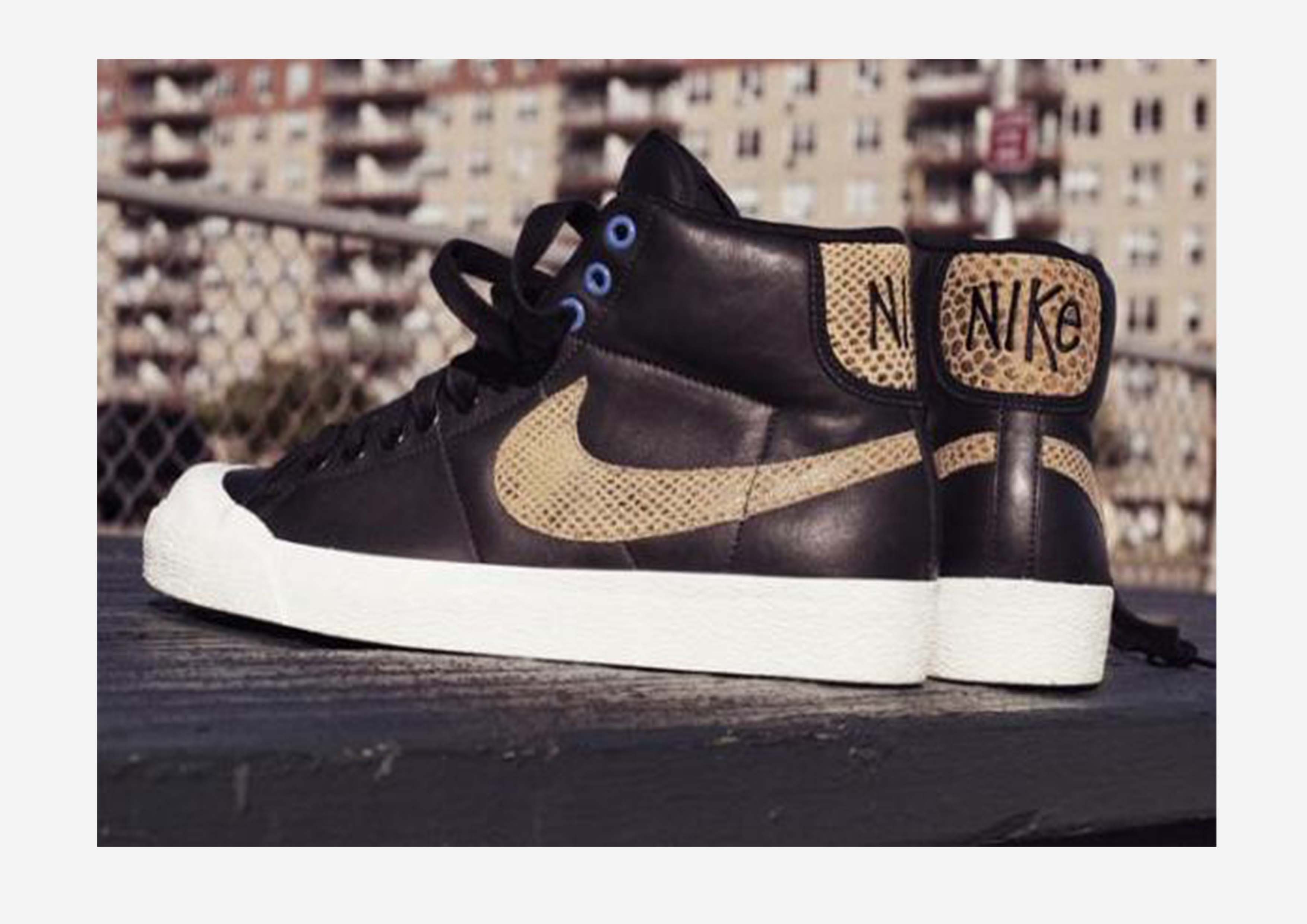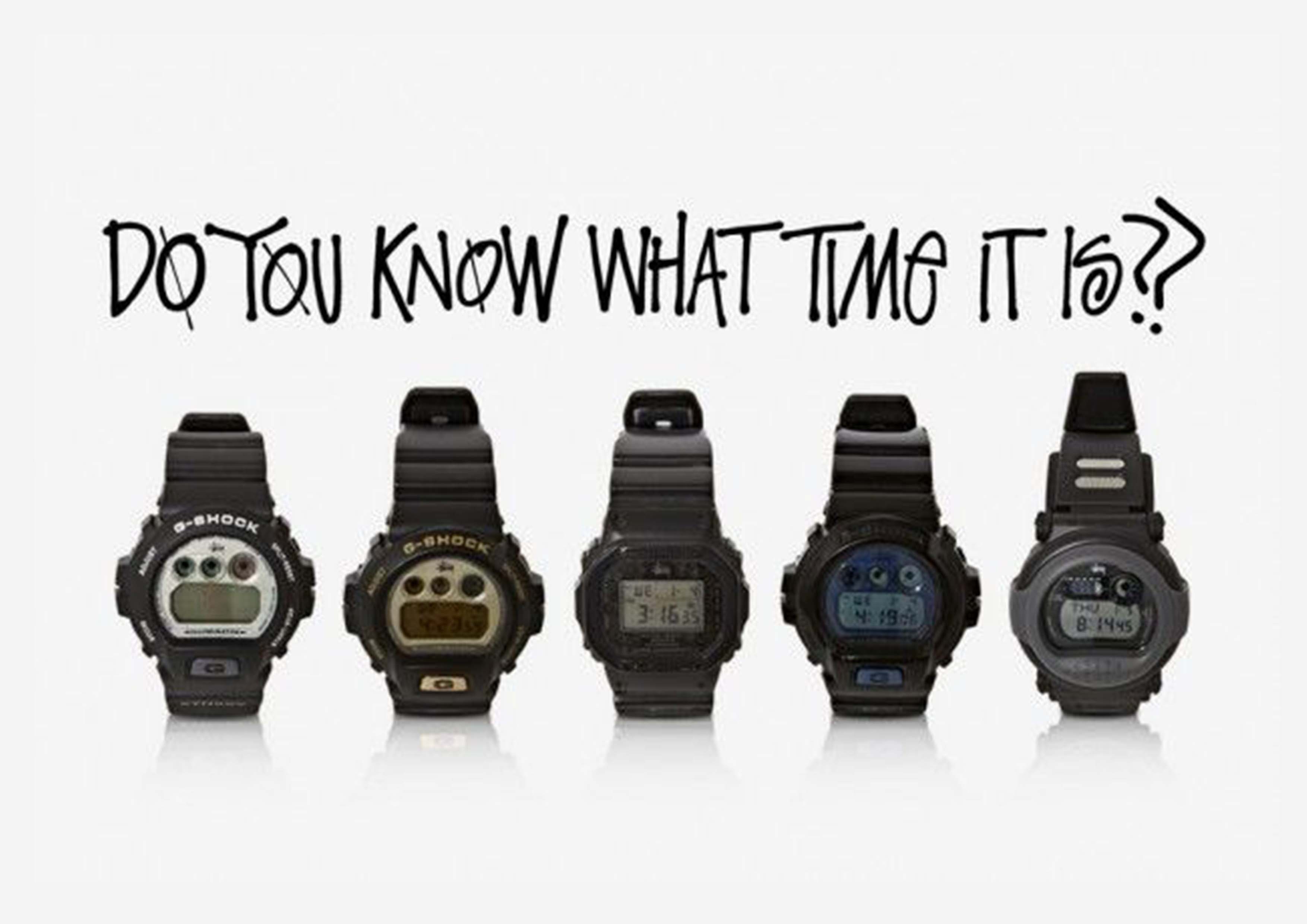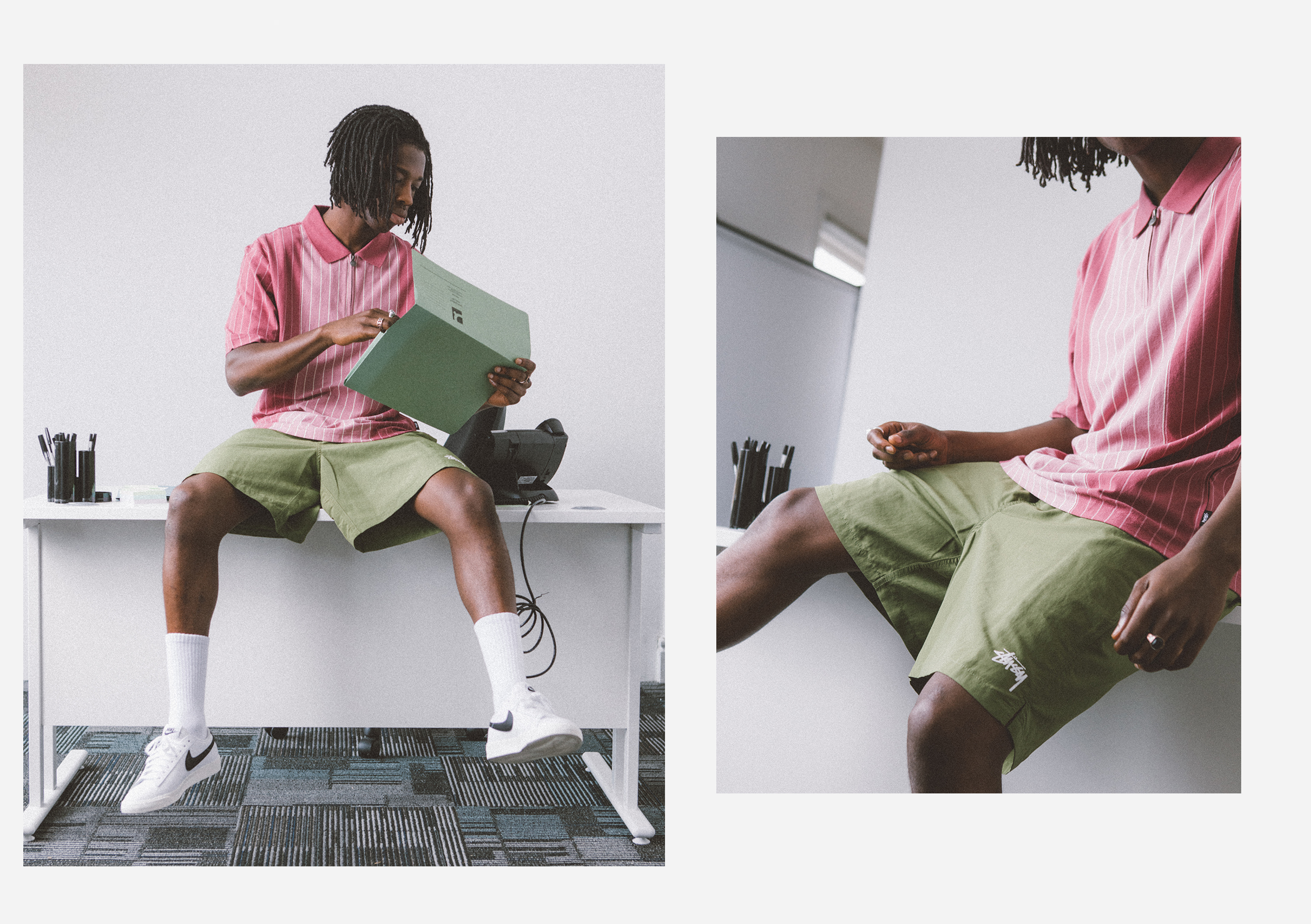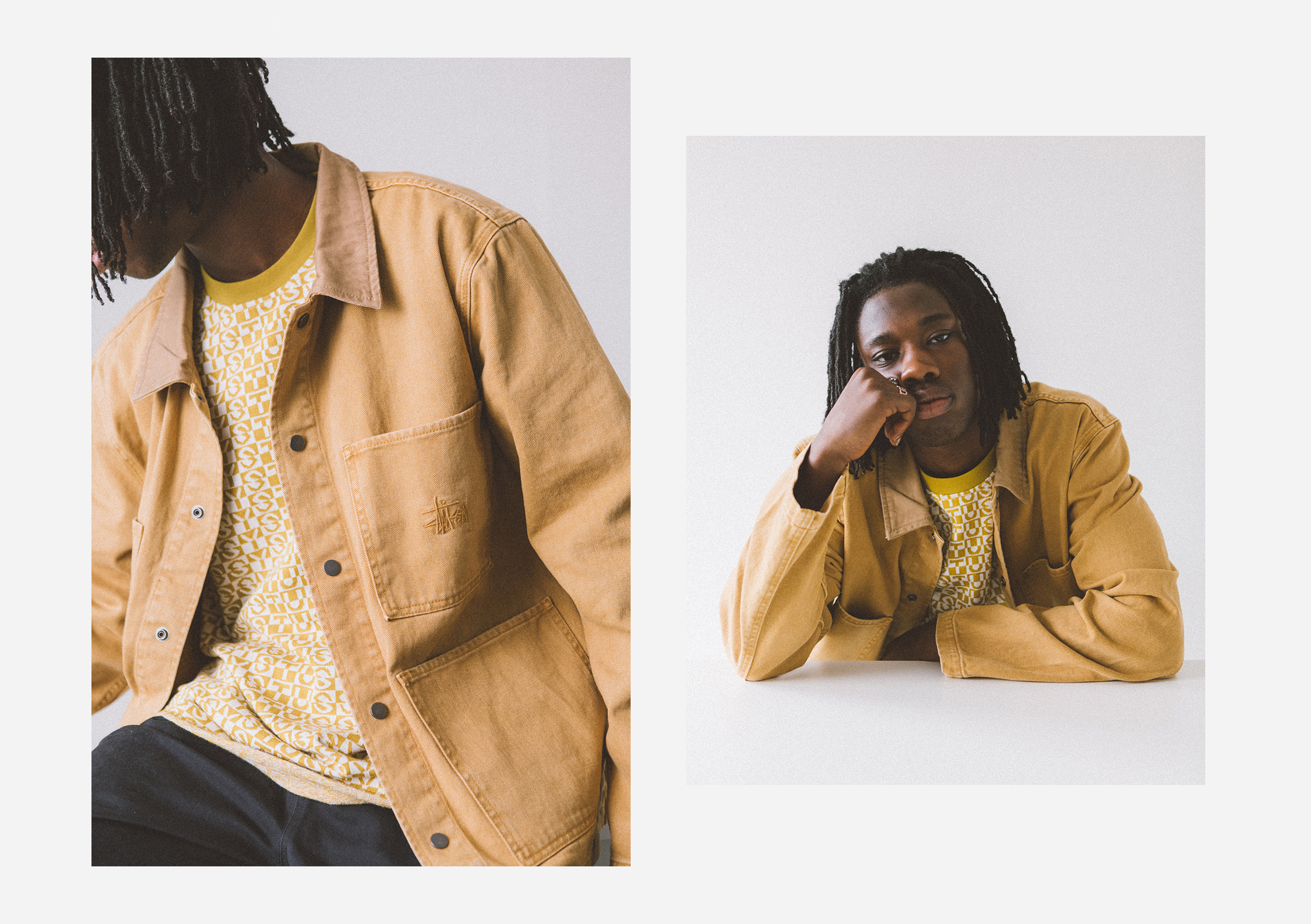History Of Stüssy: How Stüssy Became The Godfathers Of Streetwear


Early Beginnings
In 1980, California local Shawn Stüssy began creating surfboards that combined specific performance shapes with a unique graphic hand style combining elements from reggae, punk and new wave music. His recognisable signature paid homage both to graffiti handstyles and his uncle – abstract painter Jan Frederick Stussy. Shawn Stussy’s parents owned a printing shop which became the place for him to learn the basics about screens at just 12 years old. Before branching out on his own, Stussy shaped boards for Russell Surfboards – when looking at the start of his own brand the idea of actually designing and selling clothing is almost entirely accidental – it all starts with Shawn’s love for surfing.

Beyond contributing to his favourite past time in a meaningful way, there were no real financial goals in his initial years of making boards. The highlight of these every design soon became the Stüssy signature, each hand written using a dark marker. The signature itself stands out because it is in thick strokes and a strong handstyle – this becomes a real “branding” idea when Shawn decides to open up his own Laguna Beach surf shop in 1979. At this point, Shawn is at the age of 24 and has good surf industry experience but the real brand is still to begin yet.
The Start Of The Stüssy Label
Shawn carried on to make sure to lay the label on thick, distinguishing it from measly and then boring surf industry competitors. Then it became time to diversify – the history of Stüssy brand was about to begin. As 1984 comes along, Shawn Stussy went into partnership with accountant Frank Sinatra Jr. (not related to the singer) on a new apparel line using Stussy’s name. The brand was the first to make caps marked with branding for fashion, not sports teams. This idea came from kids who wore white painter’s caps — Stussy re-worked them with his own graphics and colour schemes. Among two of Stüssy’s most known designs are clever tweaks on high fashion – a pair of linked S’s as a play on the famous interlocking C’s of Chanel, and a graphic that says “Stüssy No. 4,” mimicking on Chanel’s signature perfume. By 1990, Stüssy was generating $17 million in annual turnover. The early days and DIY aspect of Stüssy even inspired Hiroshi Fujiwara to make his first brand, GOODENOUGH and start selling printed T-Shirts in Tokyo in the late ’80s.



In the brand’s early days, Shawn Stüssy travelled to key cities such as London, Paris and Tokyo, where he organically discovered people who shared the same tastes in music, fashion, and culture. In 1991, Shawn Stüssy and James Jebbia (then-owner of Union and future founder of streetwear label Supreme), opened Stüssy’s first flagship store in New York. The store became a key kingpin of the first wave of retailers that paved the way in the evolving but still-gritty, up-and-coming Soho neighborhood.
The International Stüssy Tribe
Before followers, likes and online views, the International Stüssy Tribe (IST) was something you really wanted to be a part of in the late 1980s and early ’90s. To many, it was represented by the brand’s campaigns, which appeared in cult publications such as The Face and Thrasher. Before digital hype, a logo had to travel organically through the world and through word of mouth and real associations with like-minded people. Stüssy built this kind of homie referral system into its marketing from the very beginning. In 1980, when Shawn began to make graphic T-shirts featuring his handwritten logo to promote his new services as a surfboard shaper, he didn’t just create just a brand, but a worldwide tribe.

The Original Stüssy Tribe varsity jackets are one-of-a-kind pieces given to members, an item which is definitely on the grail list for many, never mind a customised one of one. Some of the names that Shawn considers colleagues at this early time in the ’80s and ’90s are Luca Benini and Hiroshi Fujiwara. They helped contribute to how the Stüssy brand is seen even today. Fujiwara and Benini widely shared the idea of fashion being an expression of lifestyle and not just graphics – Shawn started the brand as one of freedom and living in passion, and the clothing followed.
Stüssy’s gradually growing globe-trotting, like-minded group of DJs, club kids, skaters, and creatives slowly built organically. The so-called “International Stüssy Tribe” spread its message with custom varsity jackets, graphic tees and baseball caps – but most importantly through a shared lifestyle for all. The Stüssy style did to clothing what hip-hop did to music: creating something new and fresh by moving around the familiar.


Another sign of being way ahead – Shawn would send clothing out to individual creatives and tastemakers in various cities across the world to make a stamp with taste. Stüssy had been making varsity jackets before the idea to make special, one-off ‘International Stüssy Tribe’ versions, these were heavily customised and featured each individuals name. This “marketing” linked and showed there was a genuine connection between people with similar interests and style. People were very proud to wear these jackets and these people became unofficial faces of the brand. Frank Sinatra Jr, Stüssy co-founder explained, ‘we wanted people who cared enough about what they wore to go out and discover us, and feel like they had found something unique, not available everywhere, that said something about who they were and how much they cared for what they wore. We weren’t advertising from the top down, we were about being discovered from the bottom up’.

This early IST grassroots movement was key in establishing a basis for Stüssy’s wider popularity, “The tribe happened before the growth of the brand,” said Gimme5 founder Micheal Koppelman. “It appeared as a form of mutual respect between like-minded people without any consideration or motive of commercial growth, which of course is authenticity. You had to know someone to be in on the look — you couldn’t just buy into it.” Stüssy’s pioneering seek-and-find limited method of distribution meant that product was hard to come by, sometimes intentionally, sometimes not. Way back in 1987 at original UK account M-Zone in Croydon, it wasn’t just about having the money ready, you needed to find out what stock was coming in and when and know the right people. Whilst profiling the brand in the 90s, BBC 4’s The Look interviewed Shawn, in an effort to understand and explain the fashion phenomenon of the brand – Shawn’s modest attempt to explain his offerings was “pants and shirts… and jackets and hats.”


Moving Into The ’90s
In the early ’90s the classic New York hip-hop look of Carhartt jackets, baggy jeans and Timberland Boots can be seen as one of the defining influences of the brand and a turn of real “streetwear” in the big apple. It was New York that really set Stussy on a new trajectory globally, James Jebbia opened Union in 1989 on Spring Street in New York which was a huge change in the genre – it stepped away from the baggy hip-hop look of the time, but still embraced the hard wearing cool guy street attitude, played hip-hop music and offered a carefully curated selection of younger labels.
Stocking Stüssy at the time wasn’t easy, and Jebbia’s strong desire to sell it at Union wasn’t enough to convince Stussy to agree until Paul Mittleman (creative director at the time) gave the nod and brought Shawn to the store to see it for himself in person. He finally agreed, and Jebbia would go on to help open the first Stüssy store in New York in 1991 and Supreme in 1994. In ’92, both Stüssy and Union grew to L.A also and were together in a single store on La Brea avenue called ‘The Stussy Union’. One half of the store was Stüssy product and the other half filled with Union’s famed curated brand selection. This was an unique concept at the time, eventually out growing the single space and opening up in separate stores next door to each other, where they remain today.



The Famous 8 Ball Symbol
When many think of Stüssy, most will associate the brand with its famous crown, surf vibe or or Shawn’s iconic signature. Another big symbol that’s been part of the brands heritage since the 80s and has resurfaced in recent years is the classic 8 ball. The 8 ball is bold and full in American identity which made it a perfect icon for Shawn Stussy when designing his early graphic tees. Over the years the 8 ball has appeared on everything from beanies to hoodies, candles and as features in the brands campaigns. When the brand opened the London Soho chapter store in 2018, the promo for the stores opening featured 3 separate ads previewed with a gigantic 8 ball rolling through the iconic streets of Piccadilly Circus, in front of Buckingham Palace, on the tracks of the underground and then finally finding its place in the shop window of the store.



A Fascinating Marketing Strategy
Speaking on the brands creative direction and ads, Emmy Sinatra Coats, Shawn Stüssy’s former right hand woman said “From day one, Stüssy has never hired out ad agencies or creative consultants. We have always created our own shoots and over the years they’ve come to represent different eras of our brand history. We feel fortunate to have worked with amazing creative talents early on in their careers and to have such a great legacy of making images.” The marketing may have looked lo-fi, but it was always clear that Shawn Stüssy wasn’t just graphically inspired by the logos of high fashion, but studied the power of their clever marketing too.


When Stüssy launched its Summer 2020 collection, marketing for the collection featured the artwork of contemporary land artist @jimdenevan. Denevan is world renowned for applying complex geometrical artwork onto sand using rakes and sticks taking hours to create and easily washed away by the sea. As a native Californian and surfer, the collaboration is a perfect natural fit considering the brand was born out of California surf culture in the 80s. Denevan illustrated the iconic curly “S” in beach sand, located in Northern California and featured on online posts, print ads and a special graphic t-shirt.



Collaborations
Another huge part of streetwear today is the collaboration, Stüssy’s first collab – a G-SHOCK DW-6900 watch was released way ahead of the curve back in 1997. In 2001, a huge ongoing relationship began with Nike – the first Dunk landed with an ostrich and snakeskin swoosh which James Jebbia first suggested and blew peoples minds. Until that time, there weren’t a lot of collaborations taking place in the streetwear space like there are now. The Dunk was a forgotten shoe of the past, it really wasn’t trending again and this project put life back into it and got shoe companies thinking. Around 3,000-5,000 pairs were made and they sold out in two days around the world at just Stüssy stores with no internet sales. This led to more frenzied Nike releases focusing on silhouettes such as the Blazer, Spiridon and even more Dunks, all which brought new energy and hype to the chosen silhouette with a twist. Another pivotal collaboration for the brand came in 2010 – The 30th anniversary collection of Stüssy featured limited-edition collaborative T-shirts with Supreme, Bounty Hunter, NEIGHBORHOOD, The HideOut, and PAM – which connected the dots of some of the OG labels of those past 30 years. More recent projects include releases with Cactus Plant Flea Market and Porter-Yoshida, which further emphasise the wide span of customer that the brand has been able to reach organically.



After the turn of the millennium, the rise of sneaker culture and the increasing frequency of brand collaborations also gave Stüssy new outlets and customers. Further collaborations with Nike, including the first Huarache LE in 2000 and 2002’s Blazer Mid pack are among some of the most highly sought after shoes still to this day.
The Current Day
Stüssy has continued to reach a place where few that would question the brand’s continued relevance and staying power. Standing as an outfitter of the cool in multiple subcultures globally, with each collection and collaboration causing mass discussion and desire. Stüssy remains relevant also because streetwear and the culture associated with it is always inherently young. In the current age of the Internet and social media, it’s easy for teens to find what they like and can identify with, whilst also easily filtering the real deal from the fake flash in the pans. As James Jebbia once said “There’s ups and downs in every brand’s history, but I think Stüssy has done a good job of staying the course”.
Shop the latest from Stüssy at Hip here.


